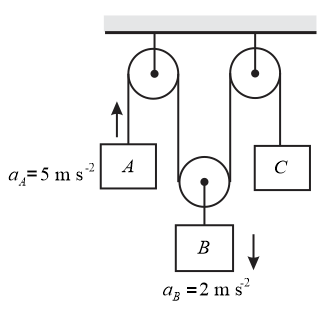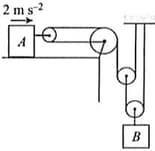In the given system, the pulley is light and frictionless; string is also massless. Initially the system is in equilibrium. Now a small block of mass is placed on the block of mass . If block always remains on block , find the normal reaction on due to .
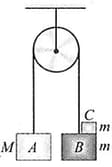


Important Questions on Newton's Laws of Motion (Without Friction)
In the arrangement of three blocks as shown in the figure, the string is inextensible. If the directions of accelerations are as shown in the figure, then determine the constraint relation.
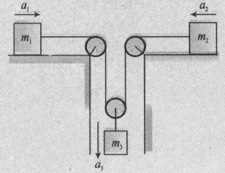
A pulley-rope-mass arrangement is shown in the figure. Find the acceleration of block when the masses are set free to move. Assume that the pulley and the ropes are ideal.

Two blocks and of mass are connected through a light string. One end of the string is connected to the block and its other end is connected to a fixed point as shown in the figure. Now a force is applied to block Find the acceleration of block
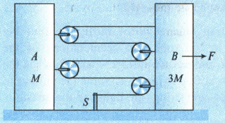
The mass of wedge as shown in the figure is and that of the block is Neglecting friction at all the places and mass of the pulley, calculate the acceleration of wedge. Thread is inextensible.
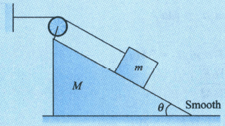
A block of mass is connected with a particle of mass by a light inextensible string as shown in the figure. Assuming all contacting surfaces as smooth, find the acceleration of the wedge after releasing the system.
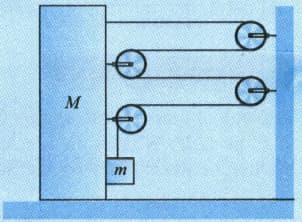
In the given figure, find the acceleration of , if the acceleration of is .
The three blocks shown in figure move with constant velocities. Find the velocity of blocks and .
Given
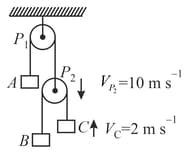
For the system as shown in the figure, find the acceleration of . The accelerations of and with respect to ground are marked.
